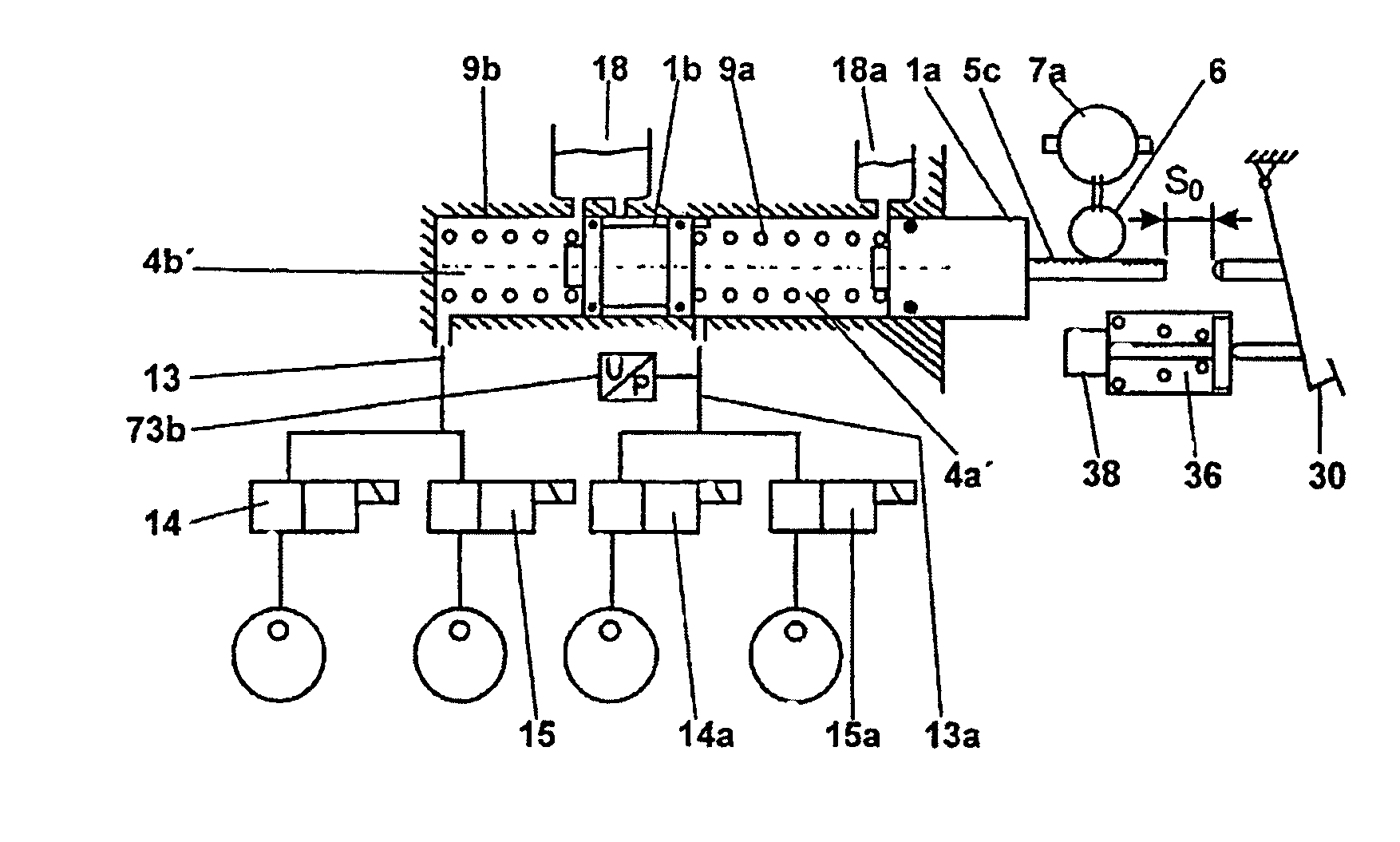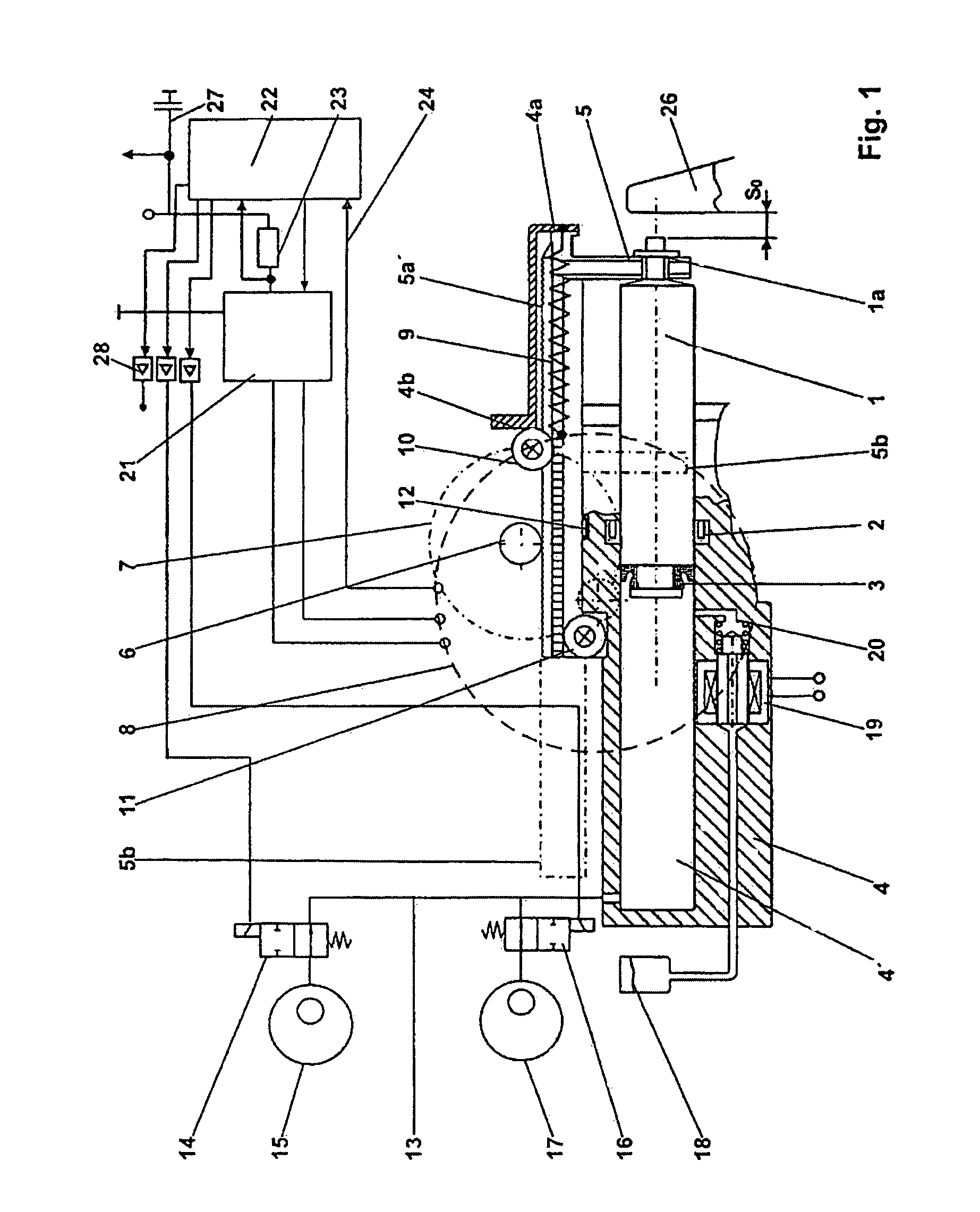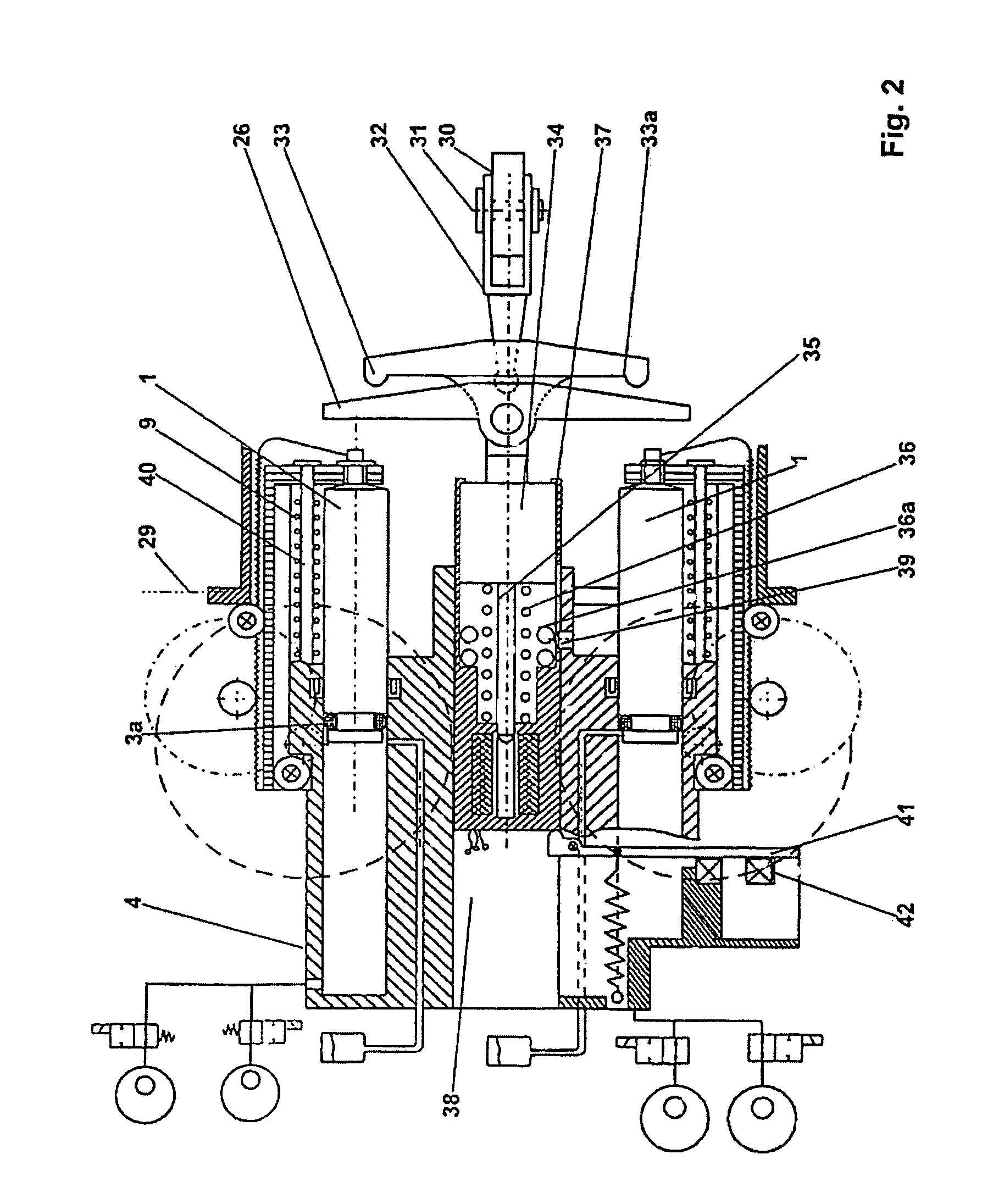Brake system with electromotively driven piston/cylinder system
a technology of electromotive driving and brake system, which is applied in the direction of brake action initiation, braking system, coupling, etc., can solve the problems of system not establishing itself, weak vacuum, and construction implementation of wedge brake, and require additional rollers
- Summary
- Abstract
- Description
- Claims
- Application Information
AI Technical Summary
Benefits of technology
Problems solved by technology
Method used
Image
Examples
Embodiment Construction
[0029]FIG. 1 shows a detail of the integrated unit which is responsible for generating pressure or power-assisted braking. In this connection the piston 1 with the conventional seals 2 and 3 is moved in the cylinder housing 4 parallel to the piston via a specially designed toothed rack 5a. The seal 2 is designed in such a way that it also provides a seal in the case of a vacuum in the piston chamber 4′. This toothed rack 5a transmits the force to the leading, crowned end of the piston 1. At this location it has a collar stud 1a via which the toothed rack 5a, with restoring spring 9, brings the piston into the starting position. In this case the toothed rack adjoins the cylinder housing 4a. This external spring has the advantage that the cylinder has a short design and little clearance volume, and this is advantageous for ventilation. Owing to the lateral forces the toothed rack is mounted in the rollers 10 and 11 with a slider 12. FIG. 1 clearly shows that the parallel arrangement o...
PUM
 Login to View More
Login to View More Abstract
Description
Claims
Application Information
 Login to View More
Login to View More - R&D
- Intellectual Property
- Life Sciences
- Materials
- Tech Scout
- Unparalleled Data Quality
- Higher Quality Content
- 60% Fewer Hallucinations
Browse by: Latest US Patents, China's latest patents, Technical Efficacy Thesaurus, Application Domain, Technology Topic, Popular Technical Reports.
© 2025 PatSnap. All rights reserved.Legal|Privacy policy|Modern Slavery Act Transparency Statement|Sitemap|About US| Contact US: help@patsnap.com



